'Vivat Volker!' - The Hidden Portraits of Volker Hermes.

Left:Volker Hermes./ Right: Hidden van Ravesteyn, Fotocollage.
If you thought that Old Master portraits lacked significance in a selfie saturated society, think again! Thanks to the artist Volker Hermes, and further fuelled by a world rocked by pandemic panic, they have never been more relevant. When it comes to new ways of seeing portraits, Volker…. well, he has it covered!
In his ‘Hidden Portraits’ series he works with portraits (from the Renaissance to the 19th century) and hides the sitters features behind fabric, hair or clothing. By playfully obscuring our normal points of reference, Volker succeeeds in subverting the meaning of masterpieces.
His enigmatic images are now at the heart of our modern masked society asking to be interpreted by the individual. They bring a new relevance and intimacy to the process of viewing classic artworks. Thanks Volker for shedding new light on Old Masters, sharing news on your current exhibition, and also on your collaboration with Christies for Classic Week (see below)
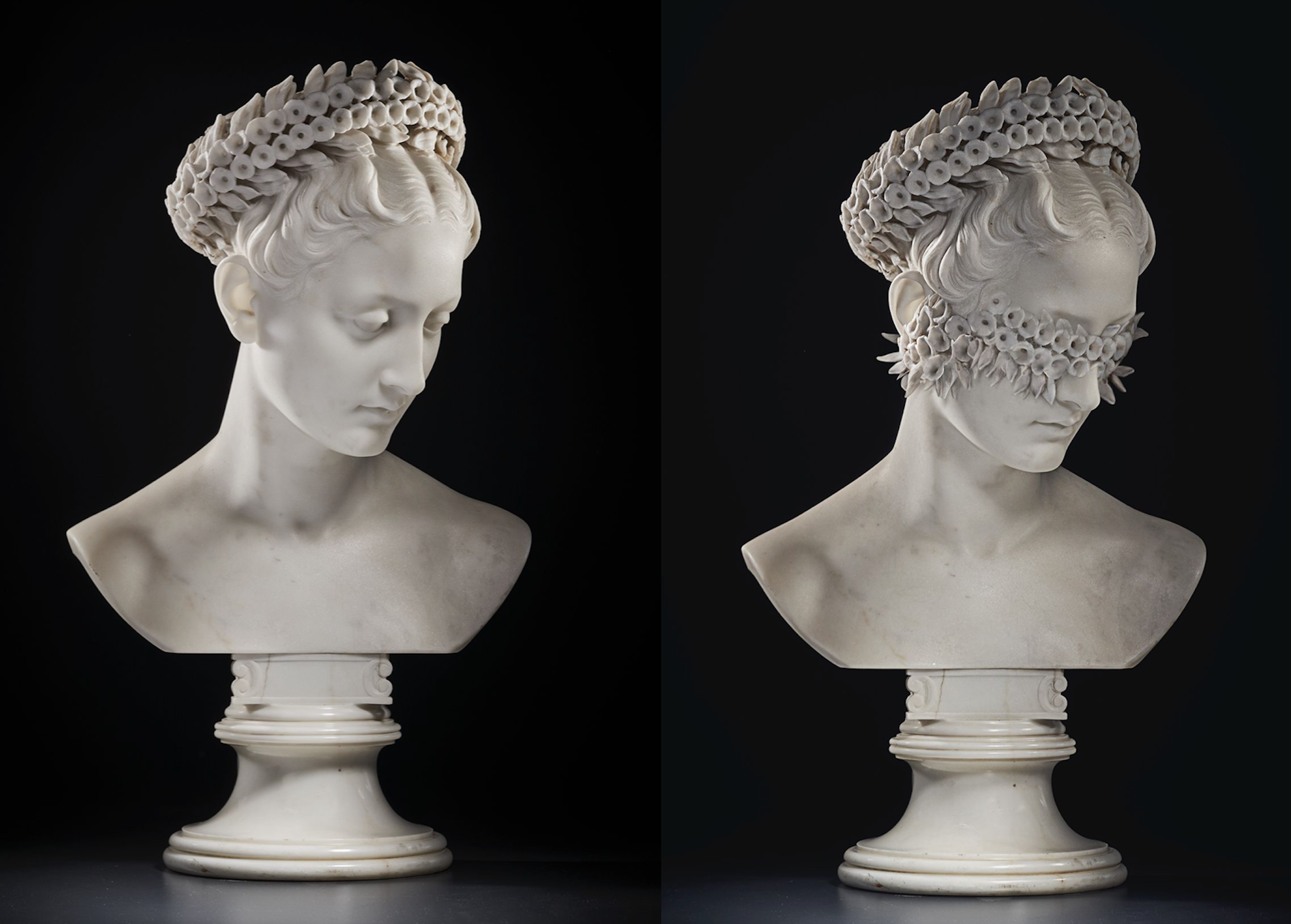
Left: Christian Daniel Rauch (Arolsen 1777-1857 Dresden), Circa 1835-1839 Bust of Luise Engel as Flora. Marble; on a circular marble socle 21½ x 12 x 6 in. (54.6 x 30.5 x 15.2 cm. )$30,000-50,000 Christies NYC.
Right: Volker Hermes Hidden Rauch. Photographic collage, edition 5 + 1AP. 50 x 40 cm 2020
When did you first know that you wanted to be an artist? Throughout my youth I longed to become an archaeologist. Then at some point I realized that I would rather create art myself than dig up art from other people and ancient times. Obviously though, the interest in historical contexts has remained with me.
What is it about portraits that appeal to you so directly? Portrait paintings are the only pictorial testimonies of people until the invention of photography. I find it fascinating to be able to have a look at people from so long ago. In a sense, they are like us. But at the same time their world was absolutely different and everything in these paintings bears witness to this. Clothing, posture, setting. As an artist, I find it very rewarding to dwell on these codes of another society and the role of the painter in this society.
Can you tell us a little about how you choose the subjects and also how you create your artworks? I come across the paintings for the "Hidden Portraits" pretty intuitively. I browse archives, collections, museum websites almost on a daily basis and find them there … or sometimes I flatter myself thinking that they find me. Depending on which series I am currently working on, it also happens that I’m specifically looking for paintings by a certain painter or era. Before I begin my interventions, I have a general concept, a superordinate idea for the respective portrait and then try to realize it by means of image processing.
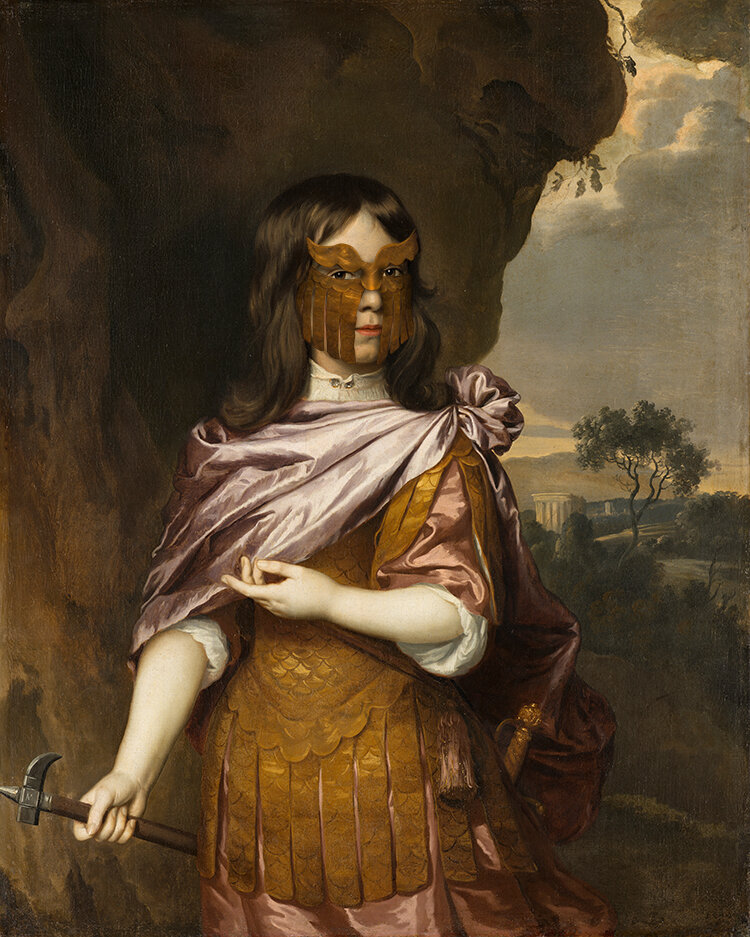
Hidden Mijtens, Fotocollage.
Is the computer creation process (digital manipulation process) as rewarding as it is time consuming? Do you feel in some way that it is a craft? For me it’s an artistic technique. It allows me to express my thoughts on historical paintings as an contemporary artist, to work with them through a contemporary focus. Because it is not my aim to paint like an old master. I believe that the world today is a different one from 500 years ago, society functions differently, people grow up with a different mindset and in a completely different pictorial world. So contemporary painting has to be different as well. But image editing is a wonderful way for me to respectfully deal with the historical art nevertheless and to create new works.
Why do you think that your images are so convincing, is that down to your eye, taste and skill in Photoshop? Well, I hope they are convincing. I think people can see that my interventions are made from a painter's point of view and show tremendous respect and affection for the old masters. Part of this respect is that I don’t add anything to the paintings, all changes come from within the original itself. I also don’t mix different paintings. I pay attention to the peculiarities of the respective painters, brushstrokes, light, atmosphere, so that my interventions are credible and plausible. I taught myself Photoshop, and haven’t the slightest idea whether I’m using the tool correctly (or not). But I’m glad that some works turn out really well without damaging the dignity or spirit of the original paintings.
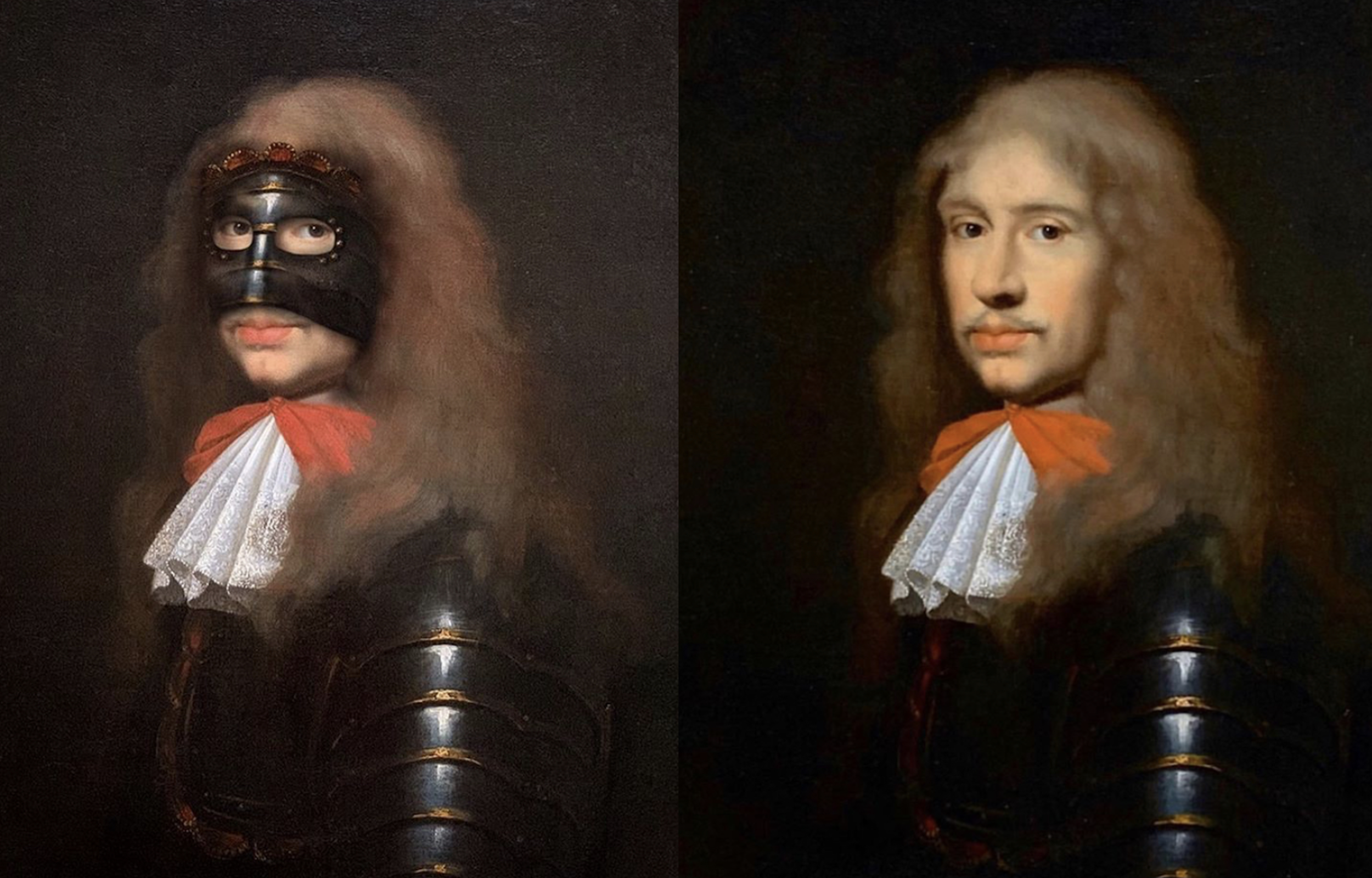
Left: Hidden Boguslas Photocollage 2020. Right: Original artwork Period Portraits, now sold.
Your love of costume comes through in all your Hidden Portraits, when and where did that originate? I’m an old opera soul. I love exaggeration in costumes and the drama and exaltation of the opera (and of course I love the music also). I used to work in a workshop for historical clothing for opera and theatre productions, and I also participated in some productions myself which was very insightful and instructive.
Has lockdown had any effect on your creativity? I work a lot. I am in the studio 7 days a week. In that sense the lockdown hasn’t changed anything for me. But thanks to social media my work has gained a much bigger und truly international audience during the last couple of weeks. Suddenly, I’m communicating with a lot of different people from all around the world which is so much fun and a huge honour. I started to work on the Hidden Portraits theme long before Covid-19, over 10 years ago, so initially the pandemic didn’t have anything to do with this series. But our overall relationship to masks and masking is now irreversibly influenced by it which adds a new level to the concealment of individuality.
Which other ‘modern’ artists do you appreciate and why? I still adore my professor, Dieter Krieg. One of the greatest painters I’ve ever met. I also want to mention Norbert Schwontkowski, whose paintings make my heart spill over. Both are good examples for what I’ve said earlier: that I value different things in contemporary paintings than in old masters.
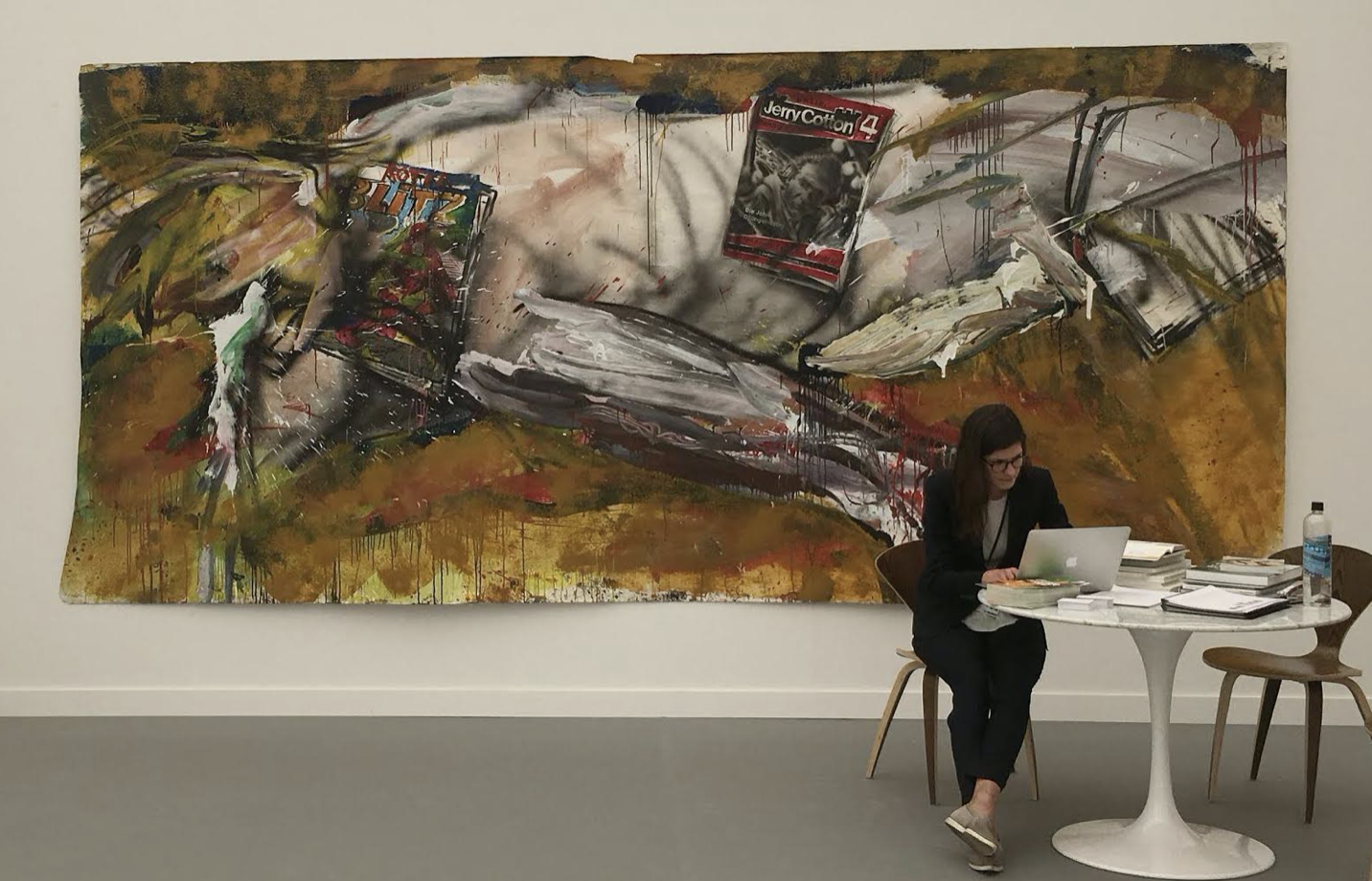
German artist Dieter Krieg (1937-2005)
Where can we purchase your work? You can get in touch with my gallery Bräuning Contemporary in Hamburg.
Has one of your works ever been displayed next to its original? Not yet, but it's happening now in my solo exhibition at the Museum Castello Visconteo in Pavia, Italy. It’s super exciting and I’d love to do this much more often.
Can you tell us a little about your current exhibition? The museum said that they’d be interested in showing a solo exhibition of Hidden Portraits and offered me to have a look around their collection of old portraits. Some works were being moved from the depot to the show collection and I found four paintings which have become the basis of my interventions. This type of encounter is new for me and I am very much looking forward to it.
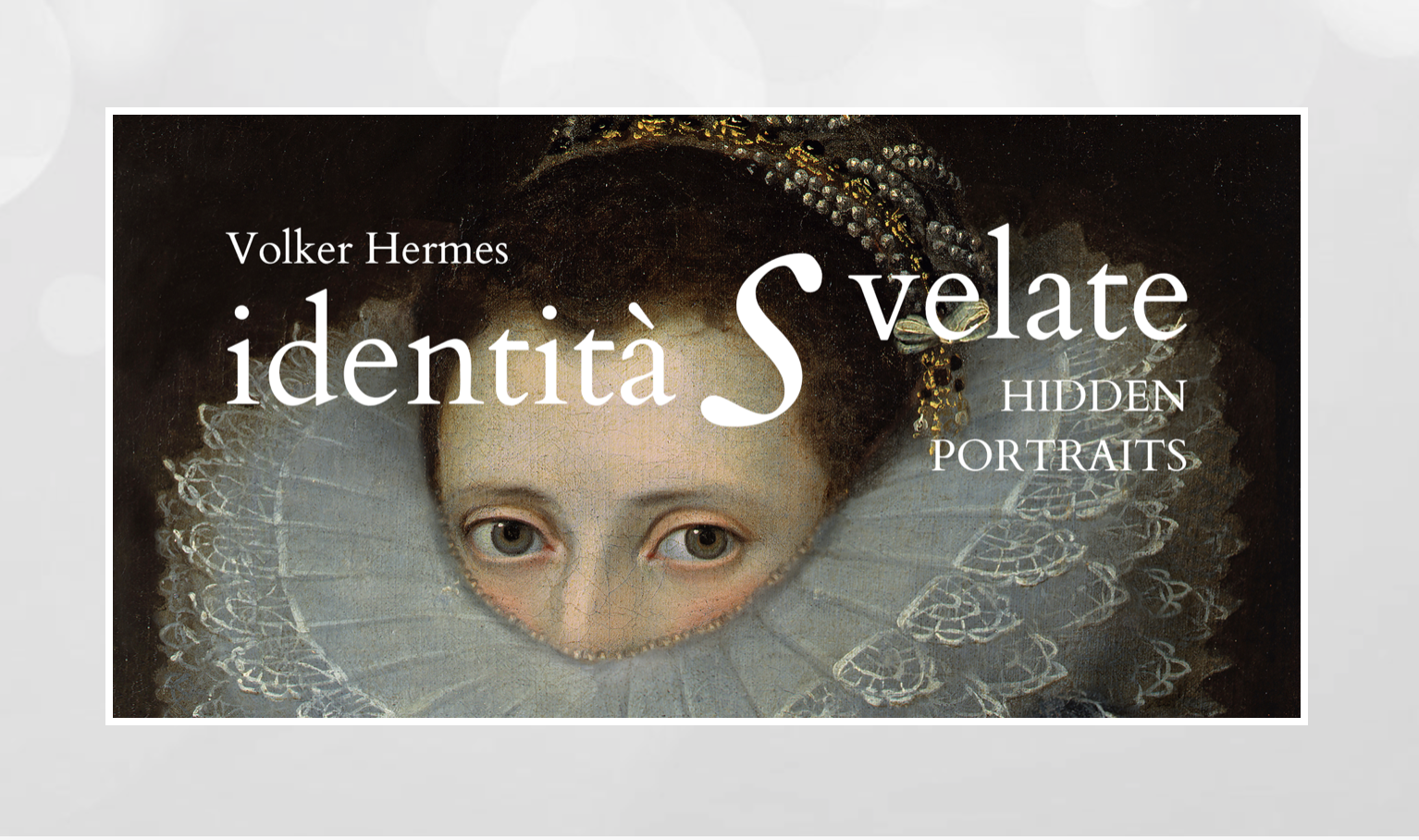
Unveiled Identity/Hidden Portraits 08/10/2020 - 06/01/2021 Musei Civici di Pavia.
Have you had your portrait painted or have you completed a self-portrait? There are a few sketched self-portraits and I was once drawn by another Düsseldorf artist. To be looked at so long, so intensely was incredibly difficult for me and I did not like the experience. But his drawing turned out very nice.
During the pandemic your works with masks and ruffs have struck a real chord, what are the ways in which people have responded directly to you about them? Yes, the reactions to my works are overwhelming. Since this pandemic is a worldwide phenomenon, I get reactions from literally everywhere. Comments, private messages, but also invitations for interviews and articles about me. My reflections on masks and disguises appeal to many people, because everyone is personally affected. The humour that shines through in my works may have taken the seriousness out of wearing masks or lightened the mood a little. As a human being, I’m deeply touched by this personal exchange, because it opens up many new worlds for me and I get a glimpse of what life is like for other people around the globe. More so than any news programme could ever offer. This is something I will always remember.
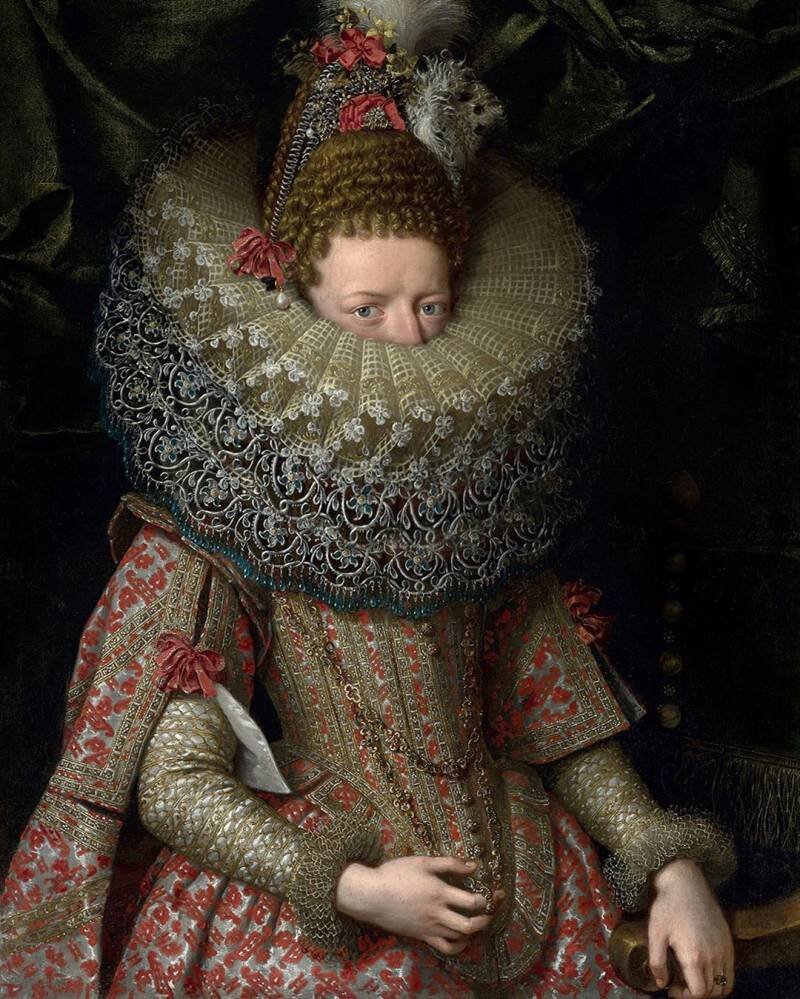
Hidden Porbus V Fotocollage.
Your ‘fans’ have no idea about your personal appearance, is this deliberate? Actually, showing my artworks feels very personal to me because they say a lot about me. But otherwise I’m rather shy, I’m not a good performer on a stage and I don't like to be photographed. This is neither concept nor coquetry, it just doesn't occur to me to publish photos of myself. Unfortunately, sometimes there’s no way around it, for example at press conferences, so if you do feel like it, you can find pictures of me.
When, where and with whom are you happiest? That’s difficult to answer, because aren’t the happiest moments always the ones we didn’t anticipate? A dinner with friends, where you suddenly feel very much at home, an exciting encounter with a person you didn't know before, a beautiful place, a painting in a museum that that floods your heart, or that moment when you suddenly realize alone in the studio that you really love what you do.
Interview - Nick Cox October 2020.

Hiden Knight, Fotocollage..

Hidden Largilliere, Fotocollage.

Hidden Singleton Copley, Fotocollage.